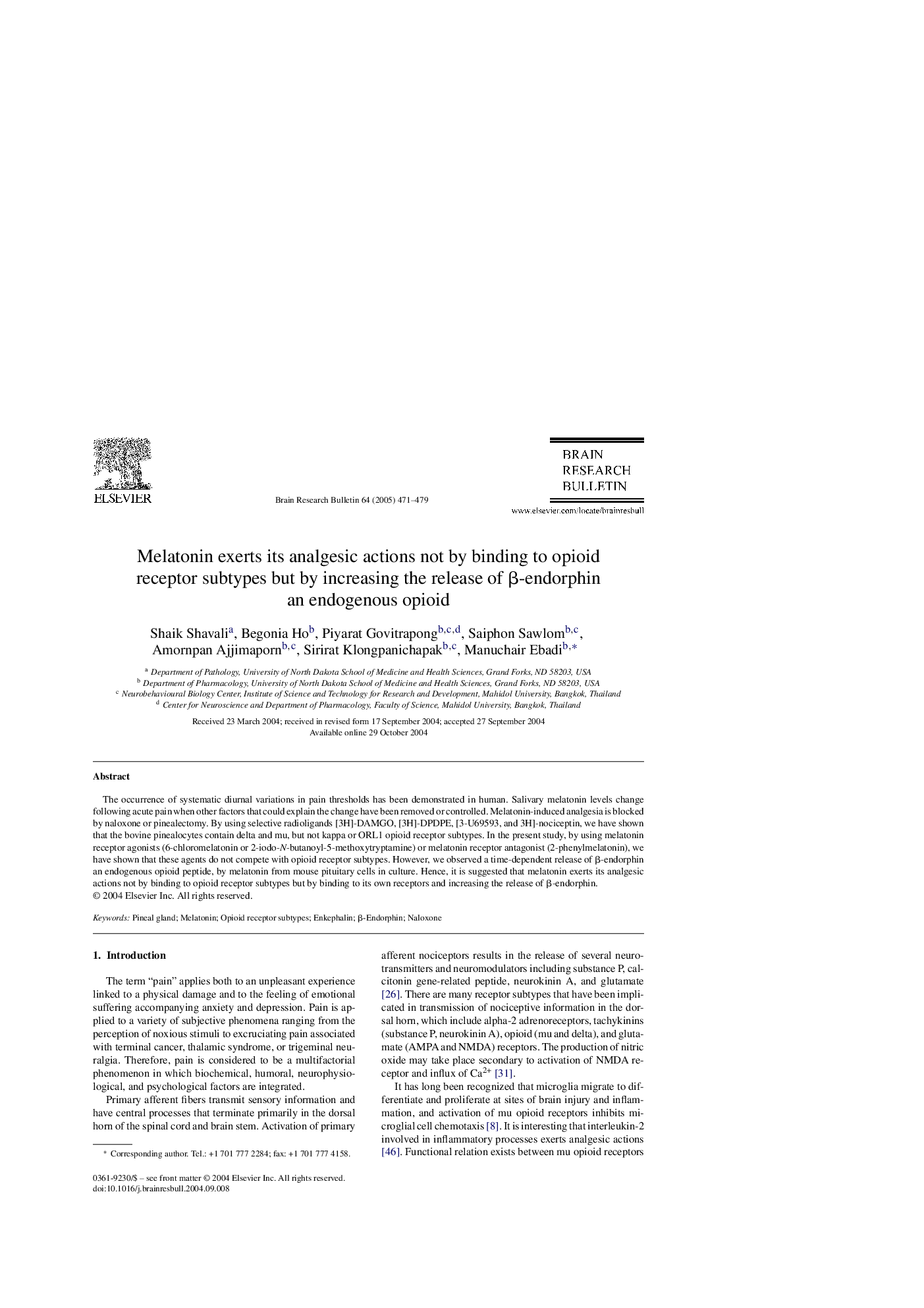| کد مقاله | کد نشریه | سال انتشار | مقاله انگلیسی | نسخه تمام متن |
|---|---|---|---|---|
| 9409587 | 1290885 | 2005 | 9 صفحه PDF | دانلود رایگان |
عنوان انگلیسی مقاله ISI
Melatonin exerts its analgesic actions not by binding to opioid receptor subtypes but by increasing the release of β-endorphin an endogenous opioid
دانلود مقاله + سفارش ترجمه
دانلود مقاله ISI انگلیسی
رایگان برای ایرانیان
کلمات کلیدی
موضوعات مرتبط
علوم زیستی و بیوفناوری
علم عصب شناسی
علوم اعصاب سلولی و مولکولی
پیش نمایش صفحه اول مقاله

چکیده انگلیسی
The occurrence of systematic diurnal variations in pain thresholds has been demonstrated in human. Salivary melatonin levels change following acute pain when other factors that could explain the change have been removed or controlled. Melatonin-induced analgesia is blocked by naloxone or pinealectomy. By using selective radioligands [3H]-DAMGO, [3H]-DPDPE, [3-U69593, and 3H]-nociceptin, we have shown that the bovine pinealocytes contain delta and mu, but not kappa or ORL1 opioid receptor subtypes. In the present study, by using melatonin receptor agonists (6-chloromelatonin or 2-iodo-N-butanoyl-5-methoxytryptamine) or melatonin receptor antagonist (2-phenylmelatonin), we have shown that these agents do not compete with opioid receptor subtypes. However, we observed a time-dependent release of β-endorphin an endogenous opioid peptide, by melatonin from mouse pituitary cells in culture. Hence, it is suggested that melatonin exerts its analgesic actions not by binding to opioid receptor subtypes but by binding to its own receptors and increasing the release of β-endorphin.
ناشر
Database: Elsevier - ScienceDirect (ساینس دایرکت)
Journal: Brain Research Bulletin - Volume 64, Issue 6, 30 January 2005, Pages 471-479
Journal: Brain Research Bulletin - Volume 64, Issue 6, 30 January 2005, Pages 471-479
نویسندگان
Shaik Shavali, Begonia Ho, Piyarat Govitrapong, Saiphon Sawlom, Amornpan Ajjimaporn, Sirirat Klongpanichapak, Manuchair Ebadi,